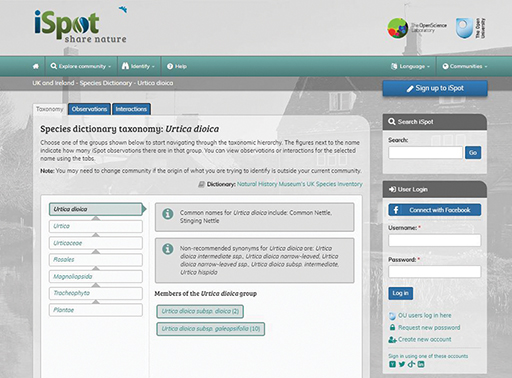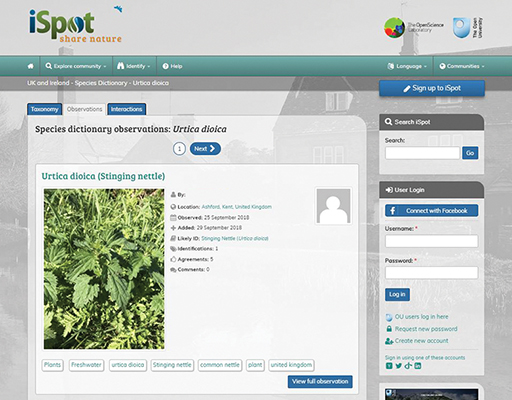3 Finding out basic information
As a starting point in my quest I visited iSpot, posted my observation and decided to focus on what I could find out about it from iSpot’s species dictionary.
My first point of reference was iSpot’s ‘Taxonomy’ tab for Urtica dioica, which gave me the plant’s scientific classification. It also showed me the family to which the stinging nettle belongs and how it is related to other species. Here’s a link to the species’ Taxonomy page. [Tip: hold Ctrl and click a link to open it in a new tab. (Hide tip)]
My next step was to look at the ‘Observations’ tab, which led me to a number of other reported observations of the same species across the country made by other users of iSpot (Figure 2). I could see where and when their observations had been posted and other relevant information such as a picture, who posted it and how many people agree with the identification.
My third stop within iSpot was the ‘Interactions’ tab, which showed me the kinds of creatures that eat or visit nettles (Figure 3).


